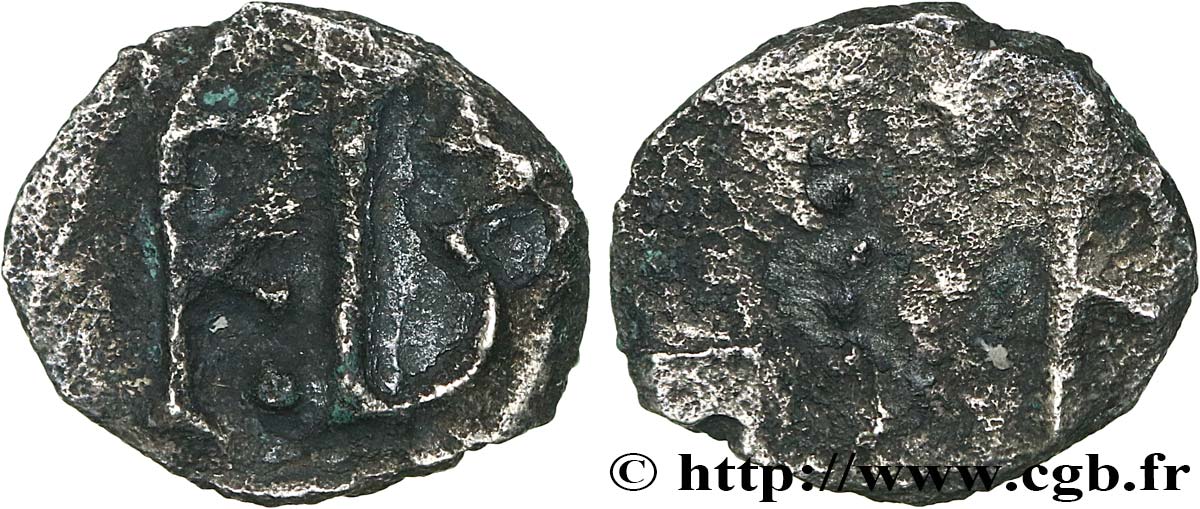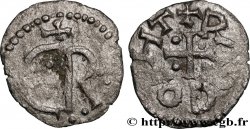bmv_619795 - LEMOVECAS - LIMOGES (Haute-Vienne) Denier
300.00 €
Количество
Добавить в корзину

Тип Denier
Дата: VIIIe siècle
Монетный двор / Город: Limoges ?
Металл: silver
Диаметр: 10,5 mm
Вес: 0,64 g.
Редкость: R3
Комментарии о состоянии
Ce denier est frappé sur un flan irrégulier et oblong. Exemplaire recouvert d’une patine grise
Ссылки в каталоге: :
Лицевая сторона
Аверс: легенда: LÉGENDE INDÉTERMINÉE.
Аверс: описание: ER rétrogrades en plein champ.
Обратная сторона
Реверс: легенда: LÉGENDE INDÉTERMINÉE.
Комментарий
Les lettres ER signifieraient Ecclesiae Racio. Ces deniers étaient classés de façon douteuse à Paris. D’Amécourt signale que ces monnaies ont été trouvées dans les dragages de la Loire. Cette série est désormais attribué à l’église de Limoges et à Neuvic-d’Ussel (B. 6340). Ces monnaies sont rares et leur classement reste limité (cf. Moneta p. 134). Bien que les lettres ER du droit fussent rétrogrades, il semble logique de rapprocher ce denier des autres avec les lettre ER à droite (cf.MONNAIES 55, n° 612, bmv_290401, bmv_329454 et bmv_424056). Il est d’ailleurs intéressant que si ces 5 deniers ont un avers très proche, tous les revers sont différents.
The letters ER would mean Ecclesiae Racio. These deniers were classified in a dubious manner in Paris. D'Amécourt reports that these coins were found in the dredging of the Loire. This series is now attributed to the church of Limoges and to Neuvic-d'Ussel (B. 6340). These coins are rare and their classification remains limited (cf. Moneta p. 134). Although the letters ER on the obverse were retrograde, it seems logical to bring this denier closer to the others with the letters ER on the right (cf. MONNAIES 55, n° 612, bmv_290401, bmv_329454 and bmv_424056). It is also interesting that if these 5 deniers have a very similar obverse, all the reverses are different
The letters ER would mean Ecclesiae Racio. These deniers were classified in a dubious manner in Paris. D'Amécourt reports that these coins were found in the dredging of the Loire. This series is now attributed to the church of Limoges and to Neuvic-d'Ussel (B. 6340). These coins are rare and their classification remains limited (cf. Moneta p. 134). Although the letters ER on the obverse were retrograde, it seems logical to bring this denier closer to the others with the letters ER on the right (cf. MONNAIES 55, n° 612, bmv_290401, bmv_329454 and bmv_424056). It is also interesting that if these 5 deniers have a very similar obverse, all the reverses are different








 Cообщить об ошибке
Cообщить об ошибке Распечатать страницу
Распечатать страницу Отправить мой выбор
Отправить мой выбор Задать вопрос
Задать вопрос Consign / sell
Consign / sell
 Информация
Информация










